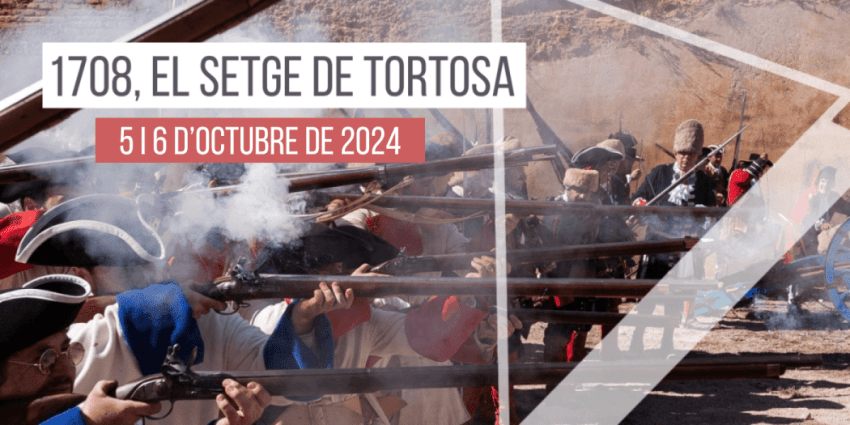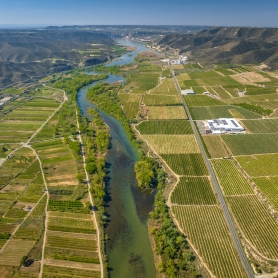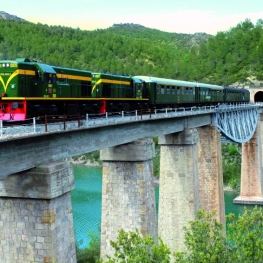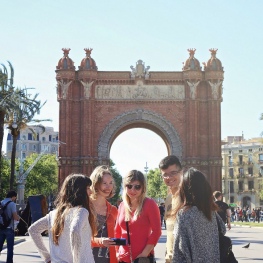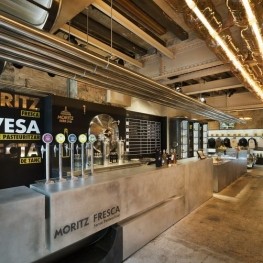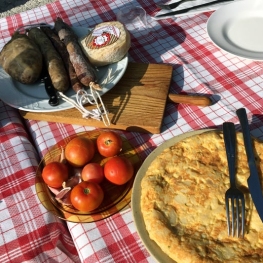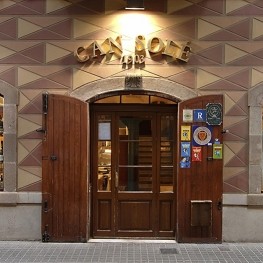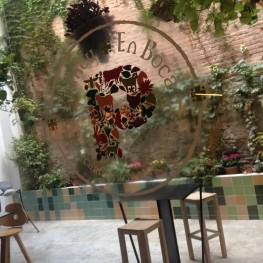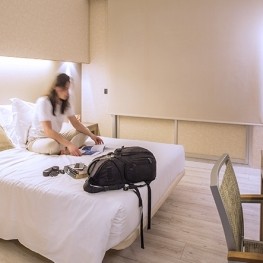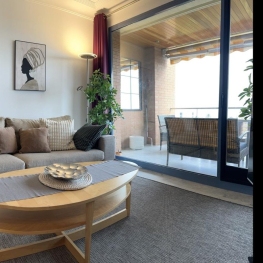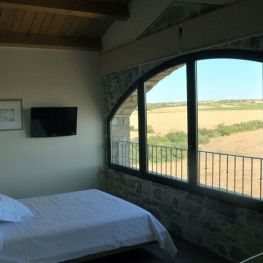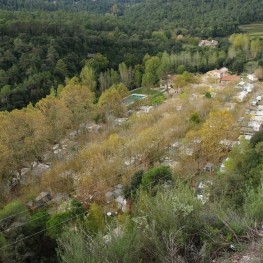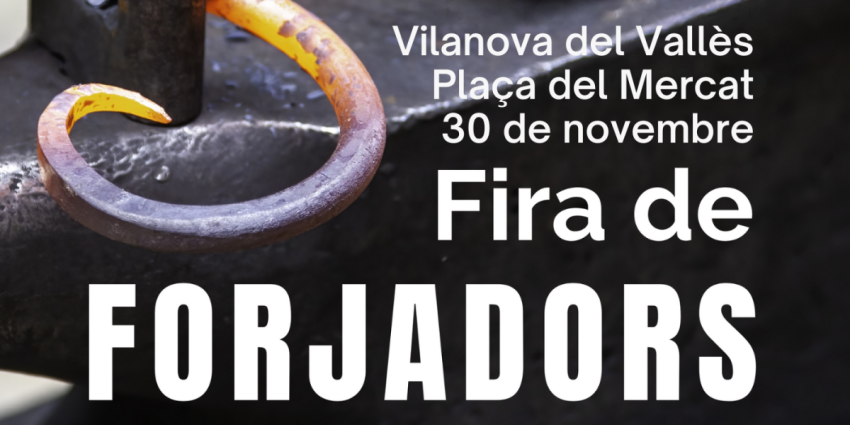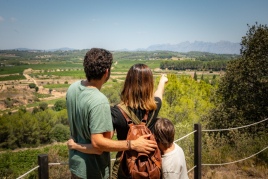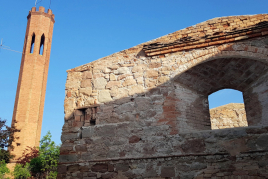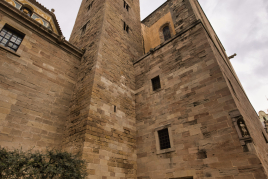1714 Route: History and heritage of the War of the Spanish Succession in Catalonia
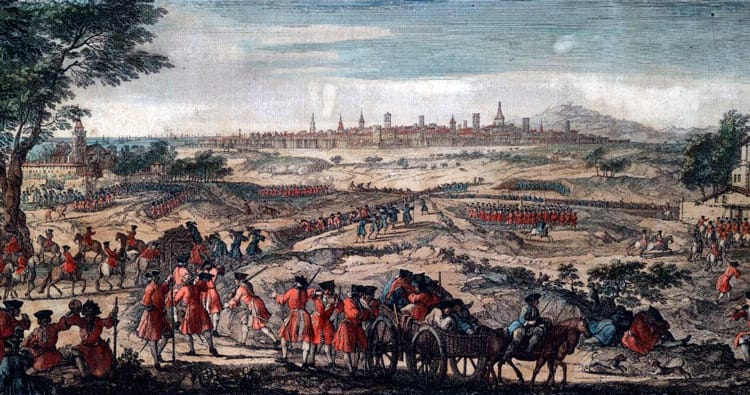
Since 1980, Catalonia has celebrated its National Day on September 11. This holiday commemorates the defeat suffered by the Catalan people at the hands of Philip V's troops on this very day in 1714. At that time, Catalonia lost its last Catalan state and institutional structures, which had been established since the Middle Ages.
This conflict was part of the War of Succession that broke out between 1702 and 1714 as a result of the death of King Charles II without succession, which generated the confrontation between the supporters of Philip of Anjou or Philip V and Archduke Charles of Austria as possible candidates to possess control of the Spanish monarchy.
The War of the Spanish Succession was an international conflict in which the major European powers intervened.
To better understand the events that unfolded during those days, femturisme.cat invites you to take the 1714 route, which covers the five Catalan locations linked to the War of the Spanish Succession, which, as we all know, led to the occupation of our lands by Franco-Castilian troops and the resulting loss of identity. A journey through our historical memory that you can't miss.
The Old Cathedral of Lleida
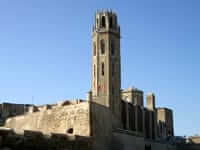 We'll begin the route in Lleida, the capital of one of the four Catalan provinces. This city is primarily identified with a monument, the Seu Vella (Old Cathedral). It is located at one of the highest points in the city, on a peak said to have once housed a Muslim mosque. From here, one can observe the entire city and part of the Segrià plain, especially from the Serp (Snake's Tongue) breakwater or the Queen's Bastion.
We'll begin the route in Lleida, the capital of one of the four Catalan provinces. This city is primarily identified with a monument, the Seu Vella (Old Cathedral). It is located at one of the highest points in the city, on a peak said to have once housed a Muslim mosque. From here, one can observe the entire city and part of the Segrià plain, especially from the Serp (Snake's Tongue) breakwater or the Queen's Bastion.
This monument has played a significant role in the history of Lleida. To begin with, its construction took two centuries. This cathedral and its connection to the War of the Spanish Succession began when, in November 1707, Philip V 's troops entered the city of Lleida and conquered it, subjecting it to harsh repression and looting. Unfortunately, some of its inhabitants, who had taken refuge in the Roser Convent, were even murdered.
From that moment on, the city was controlled by Marshal Louvigny, who occupied the rooms of the Seu Vella, forcing the monks to relocate. He also converted the building into a prison and, later, a barracks, giving this religious space a military character.
The University of Cervera
 Continuing in the province of Lleida, we will travel to the town of Cervera. This municipality is also notable, primarily, for its cultural heritage: the University of Cervera. During the 18th century, it was one of the nerve centers of Catalonia, as it was the only center of higher education in Catalonia, given that the six remaining universities that existed until then were repressed. This center once had up to 2,000 students, including well-known figures such as the philosopher Jaume Balmes and the politician Joan Prim.
Continuing in the province of Lleida, we will travel to the town of Cervera. This municipality is also notable, primarily, for its cultural heritage: the University of Cervera. During the 18th century, it was one of the nerve centers of Catalonia, as it was the only center of higher education in Catalonia, given that the six remaining universities that existed until then were repressed. This center once had up to 2,000 students, including well-known figures such as the philosopher Jaume Balmes and the politician Joan Prim.
This building was constructed after the War of the Spanish Succession ended. It was built with the acceptance and approval of Philip V, when he decreed the abolition of the six existing centers, centralizing everything in a single university, the University of Cervera. It began to be supplied in 1718, and the first academic year was held in 1740-1741.
This decision by Philip V was an economic and social incentive for the municipality of Cervera, which sought to reward the loyalty of this town to the monarch during the War of Succession.
This building remains notable today as one of the most monumental works of 18th-century Catalonia. It is also one of the unique settings for the famous Aquelarre festival.
Manresana Tower
On this occasion, we'll head to the town of Els Prats de Rei in the Anoia region to visit the Torre Manresana. This tower is the only remaining part of the medieval border castle that stood in this town.
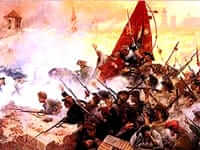 This tower was built during the 12th century, although there is documentation that places its construction in the year 1034.
This tower was built during the 12th century, although there is documentation that places its construction in the year 1034.
Its connection with the War of the Spanish Succession is that this space was the scene of an important episode in the conflict. A fierce battle took place near the tower between September and December 1711, when Austrian and Bourbon troops clashed.
In this confrontation, the Austrians deployed southeast of the municipality of Els Prats de Rei and established their headquarters in Manresana, converting the tower into a strategic observatory. The other side, the Bourbon army, positioned itself between Calaf and Sant Martí de Sesgueioles.
This battle lasted four months, and ended on December 20 with the flight of the Bourbon army towards Lleida, thus preventing its advance towards Cardona and, later, towards Barcelona.
Cardona Castle
 With the same desire to advance as the Bourbon army, we travel to Cardona to take a look at the significance of this town and its castle. Furthermore, as previously mentioned, this town is worth highlighting as a site of resistance to prevent the advance of the Bourbon forces.
With the same desire to advance as the Bourbon army, we travel to Cardona to take a look at the significance of this town and its castle. Furthermore, as previously mentioned, this town is worth highlighting as a site of resistance to prevent the advance of the Bourbon forces.
The town was occupied by this army on November 17, 1711, but the castle, despite suffering one of the fiercest clashes, resisted the Bourbon army.
The castle experienced various episodes of attacks until the military governor of the castle, Manuel Desvalls, had to accept the final capitulation of the castle on September 18, 1714, a week later than that of Barcelona in which the conditions of surrender of the city were agreed upon (September 11, 1714).
Rafael Casanova, defensive hero of the city of Barcelona
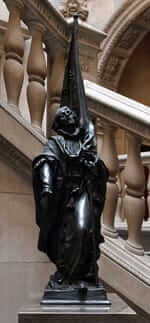 Rafael Casanova was a key figure in the War of Succession, especially in the episode that broke out in the city of Barcelona.
Rafael Casanova was a key figure in the War of Succession, especially in the episode that broke out in the city of Barcelona.
Barcelona was attacked by Bourbon troops but 5,500 men led and organized by Rafael Casanova resisted and defended the city from the army's harassment, exactly, until September 11, 1714.
Rafael Casanova was a councilor for the city of Barcelona, although he was born in Moià in 1660. Rafael Casanova lived in Moià until he was 14, when he moved to Barcelona to pursue his law studies. For this reason, we invite you to visit the house where this figure, who has become a true hero for Catalonia, was born, and learn more about the details surrounding this individual.
Rafael Casanova's birthplace has been converted into a museum that houses a biographical account of Casanova, the municipal archive, and the municipal archaeological and paleontological museum.
On September 11, 1714, he was wounded by a bullet and, in order to save him from repression, he was made to appear dead and taken to Sant Boi de Llobregat to take refuge with his in-laws.
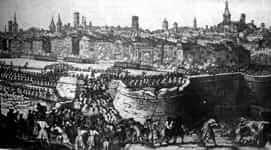
You may also be interested in: September 11, the Catalan National Day 2026 | Commemorates the events of 1714
What to do
Gimcanes GeoCats
BarcelonaDiscover Barcelona through GeoCats in the most comfortable and fun way possible!…
Gymkana Digital Turística
BarcelonaTourist and cultural routes in a gymkhana format. Completely free and without…
Where to eat
Fàbrica Moritz Barcelona
Barcelona (a 1.3 Km)The Moritz Factory Barcelona is a unique space, divided into three floors,…
Hostal de Montclar
Montclar (a 13.3 Km)Located in the town square of Montclar, in the south of Berguedà,…
Where to sleep
Aparthotel Silver
Barcelona (a 3.1 Km)Aparthotel Silver is one of the recommended establishments in Barcelona. It offers…
Let's Holidays Barcelona
Barcelona (a 1.8 Km)We offer more than just a stay... Let's Holidays offers you a…
La Torre del Codina
Tàrrega (a 9.1 Km)The Torre del Codina is located in the municipality of Talladell, municipality…
Càmping l'Illa
Sant Quirze Safaja (a 11.5 Km)Surrounded by nature, in the middle of the mountains at an altitude…

